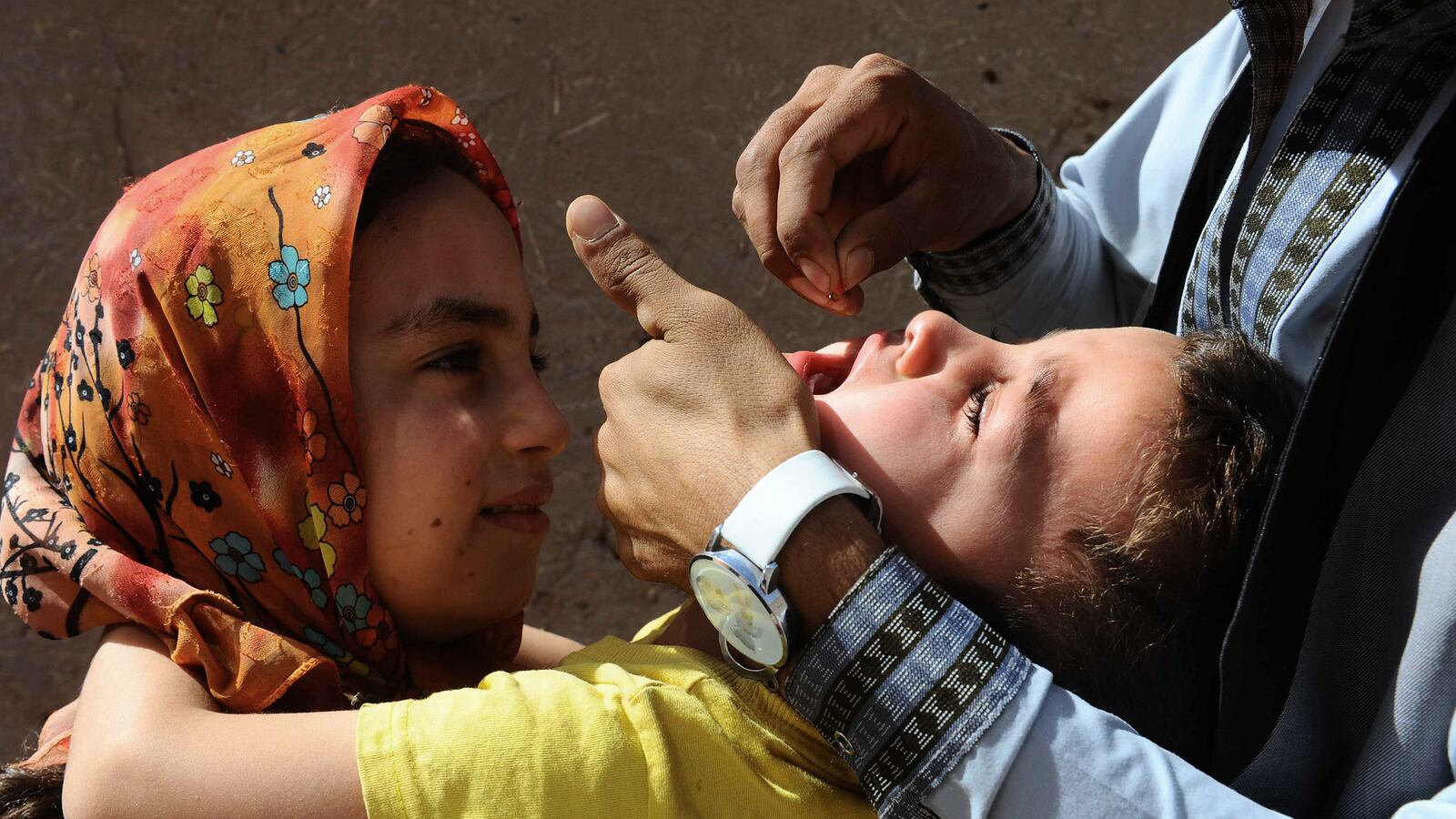The suffering of Syria’s little children knows no end. They have been slaughtered in their schools and gassed in their cradles by the Assad regime. More than a million are refugees; most are under the age of 11. And now they face one of the most horrible of human plagues: the paralyzing, suffocating disease of poliomyelitis, which mainly strikes kids under the age of five.

The World Health Organization has confirmed 10 cases in Syria so far, with more expected, and a full-blown epidemic possible. Indeed, as the WHO reports on its Web site, “as long as a single child remains infected, children in all countries are at risk.”
The sources of the Syrian outbreak are not yet confirmed. Genetic sequencing, now under way, should help nail those down. But circumstantial evidence suggests that foreign jihadists flocking to the ranks of Al-Qaeda-allied rebel groups brought this curse with them.
The global immunization campaigns carried out since 1988 have eradicated polio completely in most of the world. There had not been a case in Syria since 1999. But there are three countries where polio remains endemic: Pakistan, Afghanistan and Nigeria. All have ferocious jihadist movements, and in areas where those groups thrive, their terror campaigns make immunizations difficult if not impossible to deliver. (The C.I.A.’s reported use of a door-to-door immunization survey as cover to hunt down and kill Osama bin Laden in Pakistan certainly has not helped.)
All of the Syrian cases of polio reported so far have been in Deir al-Zour province near the Iraqi border. It is largely out of the control of the Assad regime, but is the scene of infighting among rebel factions.
A major outbreak in Somalia, another jihadist crossroads, offers a cautionary example. There, genetic sequencing shows the virus came from Nigeria. It’s not known whether the carriers were members of Boko Haram, Nigeria’s Al-Qaeda-allied group, but there has been increasing contact reported between the Nigerian terrorists and Al-Shabaab, the Somali-based organization whose members carried out the savage attack on a shopping mall in Nairobi in September.
Since May, 174 polio cases have been identified in Somalia, with the disease spreading across the borders to Kenya (14 cases) and Ethiopia (six cases).
The vast movement of refugee populations and other migrants means “this is a disease that can spread easily great distances before being detected,” says WHO spokesperson Oliver Christiaan Rosenbauer. The vast majority of carriers, especially adults, never know they’ve been infected. The contagion is passed on when the feces of a carrier enter the water supply, where the virus can remain active.
“Obviously where separation of water for drinking or bathing is not great, or children play in water that has been used for defecation, that is where the problem comes,” says Gregory Härtl, also of the WHO.
In the Horn of Africa, in response to the Somalia outbreak, the WHO has mounted an immunization campaign that now includes Kenya, Ethiopia, Djibouti, Yemen, South Sudan, Eritrea, Uganda, and other countries. Vaccination posts have been set up at key border crossings and transit sites, and, according to Rosenbauer, all this is starting to have an effect. Cases are starting to decline, especially in the area around Mogadishu where the outbreak began.
“Similar activities will need to be implemented now in Syria and neighboring areas,” says Rosenbauer, “and that’s certainly the plan, to implement a coordinated multi-country response to this.”
The measures already in effect in Syria are an interesting reflection of what happens when a country settles into a state of near-permanent war. As it happens, a campaign to give supplementary immunization against polio, measles, mumps and rubella to 1.6 million Syrian children already was planned to begin October 24 “in both government-controlled and contested areas,” according to the WHO. In the former, the Ministry of Health handles the campaign, while in the latter the Assistance Coordination Unit of the National Coalition of Syrian Revolution and Opposition Forces will try to help administer the program.
It appears to have been district health officers for the ACU who first identified the polio symptoms in several children.
Because of the success of global efforts to eradicate the disease, relatively few people know what it looks like or how terrifying its effects can be. But even in the United States, aging baby boomers can remember living in the shadow of a plague that would strike children with little warning, paralyzing part or all of their bodies, shriveling their limbs, and in some cases shutting down their respiratory systems so completely that they had to survive, if they lived at all, confined in what were called “iron lungs.” That began to end after the development of the first polio vaccine in 1955, and the threat now seems as remote to most people as the black plague.
If the world is not careful, however, one of this century’s grim ironies could be the return and the spread of this horrific disease by terrorists who don’t even know they have it.






